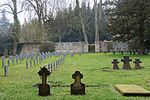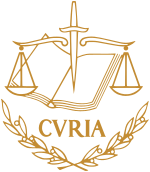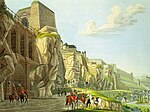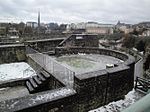Fort Thüngen

Fort Thüngen is a historic fortification in Luxembourg City, in southern Luxembourg. It is sited in Dräi Eechelen Park, in the Kirchberg quarter, in the north-east of the city. It is also colloquially known as Three Acorns (Luxembourgish: Dräi Eechelen, French: Trois glands, German: Drei Eicheln) in reference to the acorns that sit atop each of the three towers.The fort was built in 1732-1733. In 1836 and from 1859 to 1860, the fort was enlarged and reinforced. Most of the original fortress was demolished after the 1867 Treaty of London, which demanded the demolition of Luxembourg City's numerous fortifications. The three towers and the foundations of the rest of the fort were all that remained. During the 1990s, the site was reconstructed in its entirety, in parallel with the development of the site for the construction of the Mudam, Luxembourg's museum of modern art. After being fully restored, the building was reopened in 2012 as Musée Dräi Eechelen.
Excerpt from the Wikipedia article Fort Thüngen (License: CC BY-SA 3.0, Authors, Images).Fort Thüngen
Park Dräi Eechelen, Luxembourg Kirchberg
Geographical coordinates (GPS) Address External links Nearby Places Show on map
Geographical coordinates (GPS)
| Latitude | Longitude |
|---|---|
| N 49.616388888889 ° | E 6.1388888888889 ° |
Address
Fort Thüngen (Trois Glands)
Park Dräi Eechelen 5
1499 Luxembourg, Kirchberg
Luxembourg
Open on Google Maps











